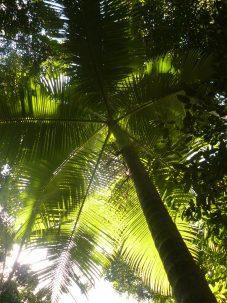

As climate changes, plants will redistribute their ranges. Now a team from the US and Canada has asked “how cold is too cold for palms?”
“Palms are sensitive indicators of changing climates, both in the remote geological past and in the present day,” said David Greenwood of Brandon University, Canada.
Although palm trees can’t propagate in freezing temperatures, they’ve recently been found in the foothills of the Swiss Alps, as garden escapees.
Greenwood and colleagues discovered that the absolute limit of palm distribution depends on the average temperature of a region’s coldest month, which must be over 2°C.
“As an example, this means that at present, Washington DC is just a little too cold [slightly over 1°C in January] for palms to successfully propagate in the wild, but you can expect range expansion in the coming decades as average winter temperatures warm up,” said Tammo Reichgelt of Columbia University, US.
The study also revealed that the presence of palms in the fossil record indicates that past temperatures remained at or above a minimum of at least 2 to 5 °C.
“A palm tree conjures up images of the tropics,” said Reichgelt. “But palm trees weren’t always confined to the tropical places.”
How much cold a palm can tolerate depends on the position of its species on the palm family phylogenetic tree, the study showed.
“If you find a palm fossil and can determine its affinity to a modern subgroup of the palm family, you can, using our data, determine the temperature of the climate when that palm was growing,” said Reichgelt.
Reichgelt and colleagues reported their results in Scientific Reports.



